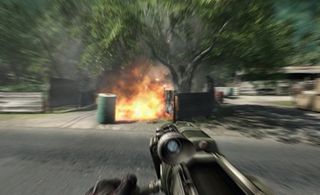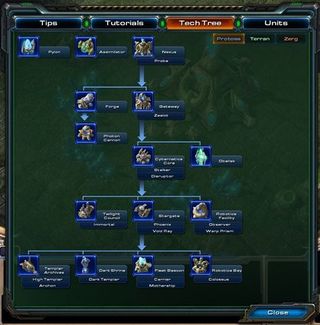PC builders work to the lowest common price: they’re forever producing rigs for the fewest dollars possible. The average PC is ugly as sin, noisy, unpleasant and awkwardly shaped. Even the boutique manufacturers have fled the retail market – concentrating instead on rigs that cost over 2k. That’s insane. Hardware marketing has to pursuade people on the basis of the fun they can have – not convince them that being a PC gamer has a ludicrous pricetag attached to it. Here’s three ways to fix it.

Make console-like PCs
Windows isn’t a scary operating system anymore. Purchasing and playing games is easier than it has ever been. Thanks to download services like Steam, PC gaming is even easier than console gaming: we don’t even need to get off the sofa to swap the discs. So let’s bring PC gaming into the living room – create a capable gaming PC that can sit next to a DVD player without fuss. You might buy it as a media PC, capable of accessing streaming content like the BBC iPlayer, YouTube and 4OD, but then it still runs Supreme Commander 2 on a 52” screen at 1920x1080. There’s no reason a move into the living room requires us to lose any of what makes the PC great.
Make branded gaming PCs
What we need are branded, doofus-proof, rock-solid dedicated PCs that guarantee consumers they’ll be able to play a specific game. A StarCraft II PC. A Battlefield 3 PC. Make one for Star Wars: The Old Republic, too. Sell them as bundles like console manufacturers do: buy this PC, and it’s already got your most anticipated game installed. By making the promise to gamers that they’ll run the game they’re most excited about, these entry-level rigs (partnered with a little customer support) could be the gateway for thousands of more PC gamers to set up and get going.
Make modular PCs
PC components shouldn’t be terrifying slices of wires and resistors. They should be featureless slabs of plastic with one single wire poking out. They should all be connected via the future equivalent of USB. So you’d have the processor block – a square of plastic with a wire sticking out. You’d have the memory block – a square of plastic with a wire sticking out. The graphics card block – a slightly bigger square of plastic with a wire sticking out. When these wires are connected to the USB-style motherboard block-of-plastic, they just work. PCs are no longer jumbles of innards, but combinations of blocks, joined like electronic Power Rangers to create something powerful.
It would return PC gaming to the people too scared to get their hands stuck into their cases. Major shops currently charge money to install RAM you already bought. The world would be a less rip-offy place if adding new RAM was a case of sticking one wire into one hole. And we’d all get fewer static shocks and slashed hands when we needed to take a look inside.
The best part of being a PC gamer? Plugging in a new graphics card, starting up this generation’s best looking game, and marvelling at just what your PC is now capable of.

The worst part of being a current-gen PC gamer? There’s nothing on the near horizon that makes upgrading worthwhile. Over the last few months, Nvidia have been trying to push their latest 3D card architecture, Fermi, to an uncaring world. Fermi, (the codeword for the tech in the GeForce 480 card) is built with the next generation of PC games in mind. It’s optimised for DirectX 11 enabled games, and can act not just as a graphics card, but as a secondary processor for better physics processing, or even environmental effects. Right now, Nvidia’s banner game to take advantage of all that power is Just Cause 2. A game that looks stunning enough on a mid-range PC.
ATi are in a similar position. Their 5800 series cards are slick, relatively cheap and have quietly slipped into the market lead. Their banner game? Battleforge – a free-to-play co-op RTS that’s perfectly playable on a PC five years old. And DirectX 11? Two of the six games that contain DirectX 11 specific effects and tech are Batman: Arkham Asylum and DiRT 2 – nothing but re-heated console ports.
This is embarrassing. The PC has always been the place where we see what the next generation of games could look like. What the PC needs is an object of lust – a game so spectacularly beautiful, so unbelievably gorgeous, we’d upgrade for it.

Above: Something like the original Crysis
If all the combined muscle of Ati, Nvidia and Microsoft can come up with are reconstituted console games and low-tech RTSes, perhaps they’re looking in the wrong place. And at the wrong genre. No one is going to upgrade to play Batman or DiRT 2. If we didn’t have the PC to run these games, we’d just play them on consoles. But Guild Wars 2? Yes. The Old Republic? Definitely. APB? Oh shit yes. The most exciting, PC-exclusive games aren’t action games. They’re massively multiplayer games.
Massively multiplayer games have traditionally been built with hardware accessibility in mind, but that hasn’t stopped them from looking beautiful. Aion might be a tedious grind, but it looks astonishing. Guild Wars 2 has the best art direction in gaming, and a rolling world that stretches out into the horizon. APB has characters and cars that demand to be played in ultra-high resolutions, and with the physics turned up to catastrophic.

ATi and Nvidia shouldn’t be highlighting marginal upgrades to console-specific games as a selling point. They should be targeting just how much better MMOs will look on your PC today, and for the next five years. And developers should be supporting them with dramatically scalable options, so that a game can look good and be playable on a WoW-era PC, but look outstanding on today’s rigs.
After Wikipedia, the second most popular wiki on the planet is the World of Warcraft fanwiki. It contains over 80,000 articles, drafted and edited purely by WoW players. That’s a vast, incomprehensible amount of knowledge and information.

The world’s most popular game is also one of the most complicated games on the planet. It’s a game in which dedicated mathematicians argue over the benefits of stacking arcane statistics, in which lore historians join the dots between static questgivers and their characters in the wider Warcraft fiction, and in which competitive arena teams are forever re-drafting their rosters dependent on tiny changes to the game’s player versus player balance. It’s a game where no one brain can comprehend its entirety.
There’s a lesson here. We PC gamers adore complication. We love to spend time thinking, planning and fixing. We like managing inventories, tweaking economies, choosing equipment and comparing builds. But here’s the problem: the rise of first person-shooters on consoles means that our capacity for tweaking and managing has been broadly diminished.
Inventories are history. Buffs and skill upgrades are largely lost. Even our health and armour have vanished, replaced with recharging shields. Facing a clutch of baddies when starting from ultra low-health used to be one of the great pleasures of PC gaming. It’s long since been lost. Now, we simply hide behind a low wall until we’ve recovered from a near fatal wound.

Mastering and exploiting complication, either by figuring out the perfect build, or Tetris-stacking an absurd number of weapons into a limited backpack, is an expression of our power and dominion over a system. We want that power back.
